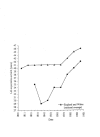The population health approach in historical perspective
- PMID: 12604486
- PMCID: PMC1449802
- DOI: 10.2105/ajph.93.3.421
The population health approach in historical perspective
Abstract
The origin of the population health approach is an historic debate over the relationship between economic growth and human health. In Britain and France, the Industrial Revolution disrupted population health and stimulated pioneering epidemiological studies, informing the early preventive public health movement. A century-long process of political adjustment between the forces of liberal democracy and propertied interests ensued. The 20th-century welfare states resulted as complex political mechanisms for converting economic growth into enhanced population health. However, the rise of a "neoliberal" agenda, denigrating the role of government, has once again brought to the fore the importance of prevention and a population health approach to map and publicize the health impacts of this new phase of "global" economic growth.
Figures





References
-
- Morris JN, Titmuss RM. Epidemiology of juvenile rheumatism. Lancet. 18July1942:59–65.
-
- Morris JN, Titmuss RM. Health and social change, I: the recent history of rheumatic heart disease. Medical Officer. August 26, September 2 and 9, 1944.
-
- Morris JN, Titmuss RM. Epidemiology of peptic ulcer: vital statistics. Lancet. 30December1944:841–856.
-
- Oakley A. Eugenics, social medicine and the career of Richard Titmuss in Britain 1935–50. Br J Sociol. 1991;42:165–194.
-
- Oakley A. Man and Wife: Richard and Kay Titmuss: My Parents’ Early Years. London, England: Harper Collins; 1996.
Publication types
MeSH terms
LinkOut - more resources
Full Text Sources

